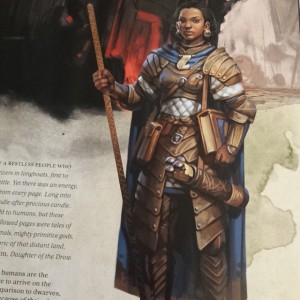Like everyone, I’ve been thinking a lot about Ferguson, and about the epidemic of white men gunning down unarmed young African American men. What is racism made out of? What makes someone think that such an action is acceptable in any way? As they say, no one is born racist. Sure, people talk a lot about the influence of tribal thinking (who is like me and therefore part of my group; who is unlike me and therefore a potential threat), but there’s no intrinsic reason that should be related to skin color any more than hair color or height. No, you have to create racists, and you do it by creating, disseminating, and consuming racist narrative.
When a police officer, or a man in a 7-11 parking lot, or another police officer, or the guy next door, or a Neighborhood Watch nutjob (I could go on and on, but you get my point) shoots and kills an unarmed young African American man (the ages of the five murder victims above spans 13 – 22), he does so because he believes that young man is in some way intrinsically dangerous, and less human because of that. After the fact, the stories pour out: “I saw him reach for a gun” is a favorite. “I thought my life was in danger” is another. What makes a man imagine a gun in the hand of an unarmed African American teenager? Because he sure as hell isn’t imagining that gun when it’s a white teenager in front of him.
I believe that the answer lies in the narratives we create, disseminate, and consume. The entertainment industry makes a staggering amount of money selling products that depict Black = Dangerous. There are white men whose entire fortunes are built on that trope. (Check out this article by Dr. Darron Smith on the issue of the depiction of Black men in American media.) The reality is that MOST African American men are NOT committing violent acts, but MOST of the art about African American men that gets funded, distributed, and consumed depicts that as if it’s irrefutable fact, even when the main Black character is not participating in those activities– he’s “getting out,” or “trying to rise above.” There are white gatekeepers out there refusing to fund art that doesn’t conform to that trope because they believe it doesn’t sell as well– and maybe they’re right, which is on us as consumers.
I’d never say that an African American (or anyone else, for that matter) who created art about violence out of his or her lived experience should not be doing that. No one should ever tell another person that the art they create out of their lived experience should be suppressed– consuming authentic narratives about others creates empathy. Everyone should have a voice, and we need diverse voices from diverse points of view in all our art forms.
But that’s just it– we need more diversity in our narratives. We need to take a cold, hard look at the ways in which we as creators and distributers of art contribute to making Black = Dangerous the PRIMARY narrative about African American men, because the impact of that is quite literally lethal. We don’t have other, equally potent cultural tropes about African American men tempering Black = Dangerous, which is why this racist trope is the one in the minds of armed white men facing unarmed African American teenagers– these white men have been taught from birth that Black = Dangerous, and they, for whatever combination of reasons (and we could list these all day– institutional racism, family racism, enjoyment of privilege, lack of critical thinking skills, and lack of empathy are just a few), BELIEVED IT, never questioned it, and gunned down someone’s baby in cold blood. As a mother, it stops my heart.
Solo performer and author Brian Copeland does a show called Not a Genuine Black Man. I took my students to see a performance of the world premiere run. It was an incredibly impactful experience. The most devastating story he told about growing up African American in a nearly all-white Bay Area town (San Leandro, now one of the most diverse cities in the nation) in the 70s, was when he was 9, being chased and harassed by racist white teenagers. He saw a police officer, thought “safety,” and ran up to him. The police officer took a step back and put his hand on his gun. NINE YEARS OLD.
This country desperately needs to disrupt the cultural status of Black = Dangerous as the primary trope about African American men. We need to stop making money off a trope that’s literally KILLING KIDS. As artists, it’s our JOBS to understand the cultural context of the tropes and narratives we create. WE MAKE CULTURE. Let’s start making it with the deliberate goal in mind of making the primacy of Black = Dangerous a thing of the past, so that one day a story about a Black bad guy will be no more about his Blackness than narratives about The Joker, Emperor Palpatine, or Hannibal Lecter are about being white. We desperately need to decouple the concept of “dangerousness” from race.
Let’s look at a content creator who’s doing it right.
As a giant nerd, of course I got the new Dungeons and Dragons Player’s Handbook. When I first cracked it open in the store and began paging through, I was floored. Page after page after page of women– as many women as men– all looking like legitimate heroes in functional armor, not scantily-clad pose monsters pretending to fight while twisted into impossible shapes that manage to show both cleavage and ass. I never realized how much I felt like I was a girl horning in on a “guy game” until I saw these pictures and felt welcomed.
What also immediately stood out was the diversity. The book is filled with people of color. I stood there holding the book in the game store, and I almost cried. I held the book out to my husband, a longtime player, and fought back tears as I explained to him what it meant to me just to see these women. And to think about what it would mean to young nerds of color to see themselves reflected on those pages.
I could go on and on about what this means for women. But to stay on target: There will be an entire generation of nerdkids who will learn this game in this edition, for whom Black heroes will be a natural part of the game, who will experience narratives of Blackness that aggressively disrupt Black = Dangerous. All D&D adventurers are dangerous. But they are all individual, as individual as the people playing them. A Black D&D adventurer is no more or less dangerous than anyone else. His Blackness is part of his identity, but nowhere in that universe is the color of his skin a marker for his dangerousness. His broadsword or his spellcasting, on the other hand . . .
Let me show you a few examples. These are just a few out of an incredible diversity of images. If you EVER had an interest in D&D, or thought you might someday check it out, now is the time.
There are still plenty of white guys in there, but along with them, there are just as many women and people of color pictured as legitimate adventurers in their own right, not window dressing or tokenistic afterthoughts. Bravo, Wizards of the Coast. You fucking nailed it. I hope this new edition brings you legions of new, diverse fans. And you can BET I will be showing these pictures to my students and talking about narrative creation in our culture.
Do I actually think D&D can save the world? YOU BET I DO. But it can’t do it alone. It’s up to us as artists and entertainment industry professionals to reject the idea that the only trope worth funding or distributing about African American men is Black = Dangerous, and replace that harmful idea with a wide variety of tropes– yes, including Black = Dragon Slayer. I’m not leading some campaign against art that depicts Black men committing crimes or being violent. I am, however, one small part of a campaign against a widespread artistic and cultural practice that PRIMARILY depicts Black men as threats.
This CAN be done. We just have to pay attention to the cultural context of what we’re creating, funding, distributing, and consuming, and make a commitment to real diversity. When it’s done right, it’s glorious.




Well done!
I also loved the textual discussion on gender fluidity AND the size representation throughout the art.. so much love for this edition. We start our new campaign on the 20th.
Combine this with the fact that most white Americans do not have a friend who is black. That lack of grounded reality means that many white Americans’ sole way of learning how to act with black individuals is through media….it HAS to be through media and creative narratives because they have no other way to learn.
The images of black men in media, then, is more important than we think…
Love this article!!! My son and I play board games featuring D&D!